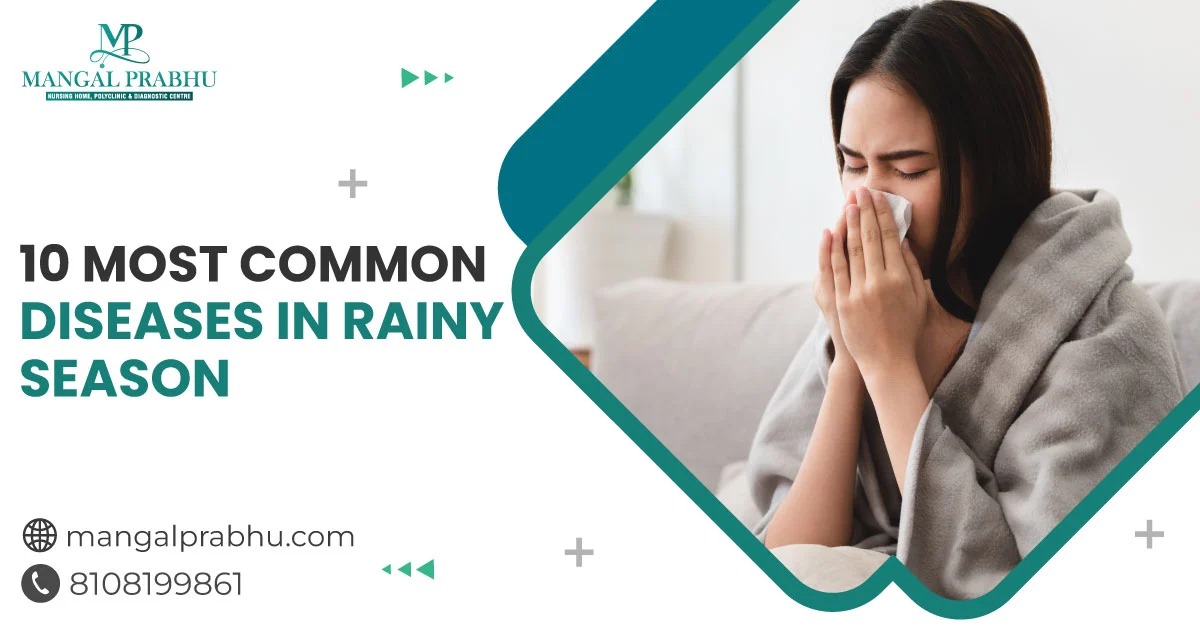
Finally, the monsoon has arrived. You can bid goodbye to the scorching summer heat and welcome this reliving season. But, with monsoon comes the risks of viral, bacterial, and other water-borne and food-borne diseases, some of which can be fatal.
Regular checkups with a general physician in Navi Mumbai are important, but it’s equally crucial to seek medical help immediately if you experience flu symptoms. In the meantime, this article delves into the 10 most common diseases in the monsoon.
10 Most Common Diseases in Rainy Season
1) Common Cold and Flu:
Temperature fluctuation and increased humidity make the common cold and flu more prevalent in people during monsoons. Viruses tend to survive easily in humid environments, increasing the chances of transmission. Simple steps, like avoiding crowded places and keeping your indoors ventilated and hygienic, can help prevent the common cold.
2) Dengue Fever:
Dengue, which can turn fatal, is caused by Aedes mosquitoes and is more common during the monsoon, as stagnant water in the surroundings can be the breeding ground for insects. Symptoms include high-grade fever, rash, hypersensitivity, and low platelet count.
3) Malaria:
Like dengue, malaria is a mosquito-borne disease. It spreads through Plasmodium parasites. Malaria is more common during the rainy season, especially in places with clean, stagnant water. The infected mosquito can transfer this illness through a bite. Symptoms include headache, fever, chills, sweating, and anemia.
4) Leptospirosis:
This bacterial infection transmits from animals to humans. If you have bruises, scratched skin, or any unhealed wound, it’s advisable to cover it before going out of the home. The bacteria causing leptospirosis is found in the urine of animals and is transferred to humans through contaminated soil and water.
5) Cholera:
Poor sanitation, unclean water, and eating contaminated food are the most common causes of cholera. Common symptoms include diarrhea, vomiting, and muscle cramps. Cholera can be life-threatening if the symptoms aren’t managed well. It can lead to severe dehydration.
6) Typhoid Fever:
Poor sanitation can also cause typhoid fever. The disease is marked by high-grade, prolonged fever, abdominal pain, stomach discomfort, weakness, and vomiting.
7) Hepatitis A:
Hepatitis A can occur in people who ingest food or beverages contaminated with an infected person’s feces. Symptoms include muscle aches, nausea, vomiting, abdominal discomfort, itching, and low-grade fever.
8) Fungal Infections:
Fungi tend to thrive in humid environments, making fungal infections more common during the monsoon than in other seasons. Athlete’s foot, ringworm, and certain skin infections are all examples of fungal infections. To relieve your symptoms, consult a specialist at an infectious disease treatment hospital in Navi Mumbai.
9) Gastroenteritis:
Also called stomach flu, gastroenteritis is caused by viruses, bacteria, and other parasites. Symptoms mainly include diarrhea, vomiting, stomach ache, fever, and muscle pain.
10) Conjunctivitis (Pink Eye):
Conjunctivitis is another communicable disease that’s prevalent in monsoon. It spreads when you come in contact with the infected person’s eyes or their stuff, like towels and makeup. Medication for conjunctivitis depends on the case. If it’s bacteria, antibiotics can be used for treatment. For allergic conjunctivitis, antihistamines are recommended.
Remember, prevention is better than cure. Keep your surroundings clean and stay hydrated. Enjoy monsoon!
